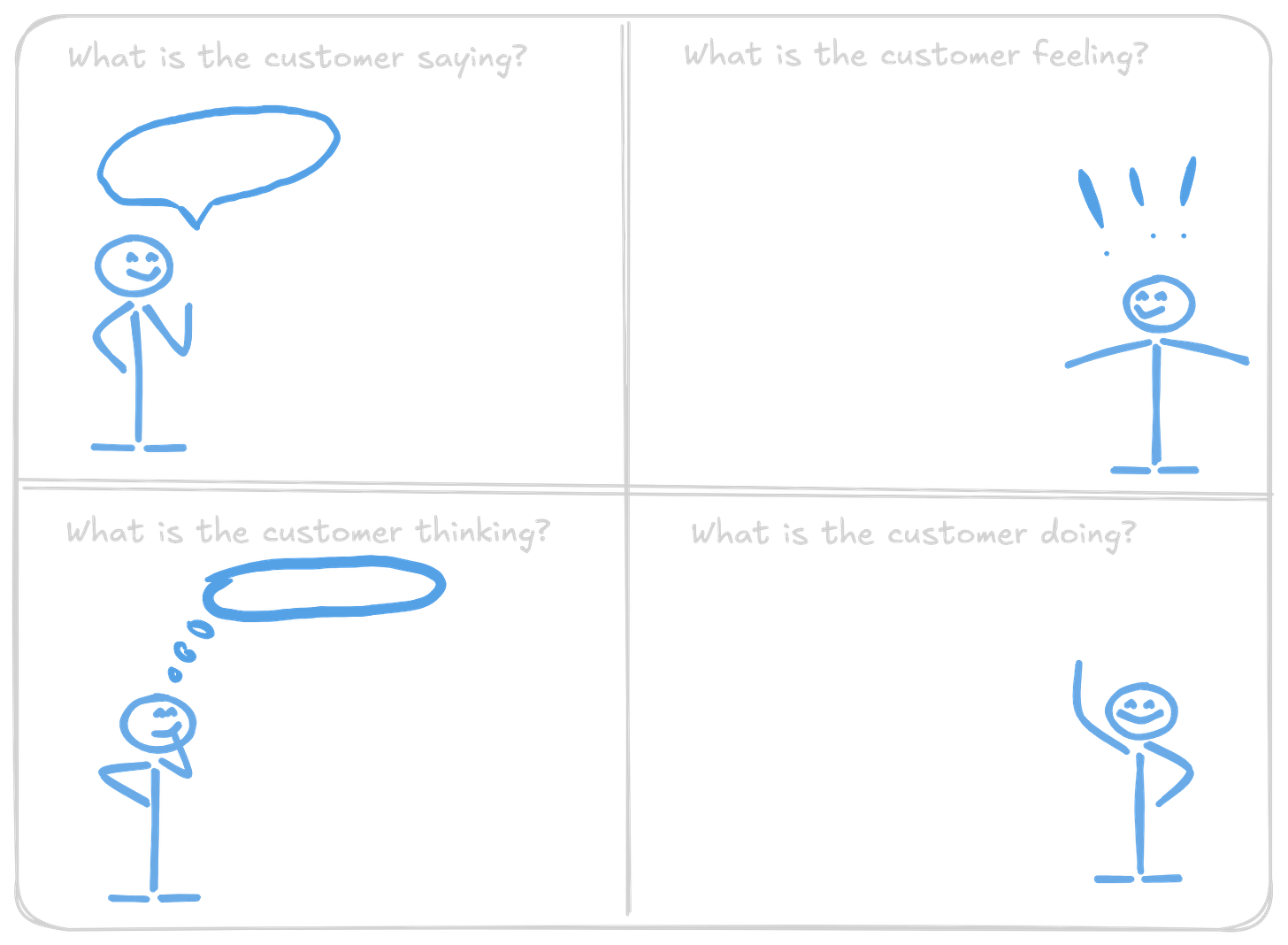Embracing Customer Needs Through Empathy Interviews
Drive customer-centric discussions by deeply understanding your customers business and personal needs.
Have you ever found yourself in a meeting where the focus is more on what we should do for the customer rather than understanding what the customer truly needs? It’s a common scenario, and while these discussions are well-intentioned, they often miss the mark on true customer centricity.
Many departments, whether internal or external-facing, believe they are customer-centric and genuinely want to make the customer successful. However, these conversations often reflect more about our assumptions and biases than the actual needs of our customers.
Making Conversations Truly About the Customer
To shift our focus to genuine customer needs, we must embrace a gradual process of building empathy. Empathy is a skill that requires us to let go of our own goals and embrace the discomfort of hearing things that may challenge our assumptions. This discomfort is crucial for innovation and growth.
Introducing the Empathy Interview
One powerful tool to achieve this is the Empathy Interview. This technique is not limited to consumer products; it’s incredibly valuable for B2B products and services where customer diversity can add complexity to your roadmap.
An Empathy Interview involves a series of open-ended questions aimed at fully understanding the interviewee. What are their functional, emotional, and social goals? Who are they truly accountable to? What unspoken problems are they facing? To capture these insights effectively, the interviewer is often accompanied by a scribe1—a silent observer who documents the conversation to help other stakeholders "feel the customer’s pain."
Organizing Insights: The Empathy Interview Framework
The framework for an empathy interview helps organize both verbal and non-verbal responses that span the range of what a customer might unconsciously communicate:
By focusing on these aspects, we can see the customer as a human being with stresses, accountabilities, and emotions, rather than just a problem to be solved. Customer Satisfaction addresses technical solutions, but Customer Delight encompasses the entire experience, especially the emotional responses that drive loyalty and advocacy.
Addressing Common Concerns
It’s natural to feel hesitant about this approach. You might think, "I can’t possibly know what the customer is thinking or feeling," or "What the customer is doing doesn’t impact what they need." These concerns are valid and reflect the challenge of stepping into someone else’s shoes. However, this vulnerability and willingness to engage in messy discussions are essential for genuine empathy and customer-centric innovation.
Practical Steps to Get Started
Start Small: Begin with a few empathy interviews focused on a specific aspect of your product or service.
Collaborate2: Use insights from these interviews to create "How Might We" questions and "Journey Maps" that further explore customer needs and pain points.
Share Learnings: Regularly share your findings with your team to foster a culture of empathy and continuous improvement.
Make it a Journey
Transforming your organization into a customer-centric one is a journey that starts with understanding and empathy. By embracing empathy interviews and other customer-centric frameworks, you can uncover deep insights and drive meaningful improvements in your products and services. Remember, every step towards understanding your customers better is a step towards delivering exceptional experiences that delight and retain them.
If appropriate, instead of or in addition to a scribe, use a conference calling tool that transcribes and analyzes the conversation for keywords and sentiments.
Let’s plan to explore together more about “How Might We” and “Journey Maps”.



